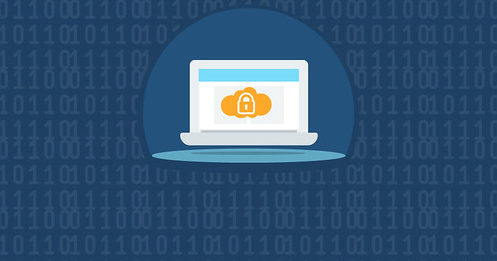WiFi allows users to wirelessly connect their devices to the internet. It is by far one of the most revolutionary wireless network technologies. WiFi has become a ubiquitous part of the lives of almost everyone. It has been a game-changer in the enterprise IT world for organizations, large and small. The contemporary IT world is driven by technology and a majority of these technologies rely on the internet.
WiFi has been aiding organizations to:
- Meet the growing needs and demands for IT services and applications
- Provide fast and reliable internet for its employees and customers
- Leverage several internet-dependent services — including cloud computing, virtualized computing instances, and more
- Increase customer satisfaction
- Promote productivity
- Improve organizational profits
- Get the most out of technological advancements
The rapid growth of WiFi makes the need for proper maintenance and security crucial. Common WiFi maintenance issues include: increased loads on the network, faulty equipment, a misconfigured network, and interference that can lead to reduced internet speeds over WiFi. Organizations need to ensure that the load on the WiFi networks is in check to avoid network congestions, packet drops, interference, and slow internet speeds — among other problems.
Here are some tips to secure and speed up your organization’s WiFi:
Avoiding Interference
Interference is one of the major hindrances to any WiFi network. As an organization, if you are struggling with inadequate or slow WiFi networks, eliminating or avoiding interference should be one of the first things to do. Wireless interference occurs when another wireless signal affects, weakens, or disrupts the WiFi signals. Most of today’s WiFi networks operate at 2.4GHz and because this band is shared with other electronics, interference is bound to affect the network. Common devices that cause interference are: wireless remote controllers, wireless surveillance cameras, cordless phones, and Bluetooth devices.

Some of the most effective solutions to cut down or minimize WiFi interferences include: better placements of routers and access points, load balancing the traffic on different network bandwidths, beamforming, and eliminating any other radio interference. Organizations can also use WiFi surveillance tools such as TamoGraph or Ekahau to perform automated channel analysis and network planning.
Bandwidth distribution and steering
While a majority of the devices are still running on older 2.4GHz network bandwidth, there has been a rapid increase in the number of devices supporting the new and improved 5GHz network bandwidth. Because the 5GHz network band offers more channels, organizations can use it to split the traffic on the network. By configuring and deploying both 2.4GHz and 5GHz bands, older devices can latch on to the 2.4GHz, while newer devices use the 5GHz band to reduce the overall network congestion. Companies can also implement band steering to enable the devices to automatically connect to the best available network, depending on their compatibility.
Control quality
Most modern routers offer Quality of Service (QoS) tools to ensure network quality by restricting the amount of bandwidth that apps use. Organizations can use these QoS tools and services to configure and prioritize network usage. For example, companies can decide to prioritize browsing speeds over downloads. Some modern network equipment (such as routers) can also help prioritize certain apps — or even blacklist the apps — to prevent excessive bandwidth usage.
Proper network and channel configuration
A WiFi signal is divided into different channels. Every router uses a predetermined WiFi channel to communicate and establish a connection with the devices. In an organization with multiple routers and multiple channels, it is essential to balance these channels to avoid network congestion. Organizations can also deploy a network policy to restrict the overuse of the internet and resources on a particular website/service. Network policies may include: blocking ads, using streamlined browsers, and installing virus and malware scanners.

Other useful network configurations include: shortening the packet sizes and transmission times, configuring channel widths, and disabling lower data rates to speed up your enterprise WiFi.
Updates and upgrades
Failing to perform regular updates and upgrades is often the root cause for inefficient and slow WiFi speeds for small- and medium-sized business (SMBs), as well as larger organizations. Network equipment can play a huge role in determining the quality of the wireless network and the internet speeds. They can help you handle congestion better, help reduce interference, and even provide QoS tools to ensure optimal network quality. Businesses can benefit from updating their network equipment regularly to keep up with the growing technology. Updating network peripherals also helps in staying safe from cyber threats and attacks. Adding additional antennas to the routers or the use of range extenders can help boost the network strength.
Keep in mind that not every update needs to be physical hardware. Network equipment providers can now push over-the-air security updates to their network gear to patch bugs and loopholes. Organizations need to keep up with these OTA firmware updates to stay secure while ensuring a quality network.
Finally, organizations can start switching to the latest WiFi 6 to get the most out of their wireless networks. Legacy networks and wireless standards involve a lot of overhead and can cause significant delays of slow WiFi speeds and data rates for both old and new devices.
Securing the network
Even if an organization implements all these best practices, wireless network speeds and reliability may still fall short. Another possibility is that intruders have gained access to the WiFi and are piggybacking onto the networks and bandwidths. This happens when an individual or group latches on to the organizational network to use the bandwidth for their personal use. Businesses need to isolate and separate their public and private networks to prevent these kinds of attacks. They can also configure their network to use only a certain amount of bandwidth per device, which can further curb the unauthorized usage. Organizations should prevent these attacks by implementing strong security measures such as: regularly updating network equipment, implementing strong network passwords, updating network peripherals and configuration, using multi-level authentications, and enabling WPA2/WPA3 encryption.

If you are still struggling with slow internet speeds over WiFi, check your wired connections before blaming the WiFi. Always make sure to check whether you are receiving the required speeds and network transmission through wired networks before working on the WiFi. If you are not receiving the required speeds even on a wired connection, reach out to your ISP to check the source of the problem. Adding access points, controlling the number of SSIDs, or using WiFi range extenders can also serve as simple yet effective means for boosting the organizational WiFi.



